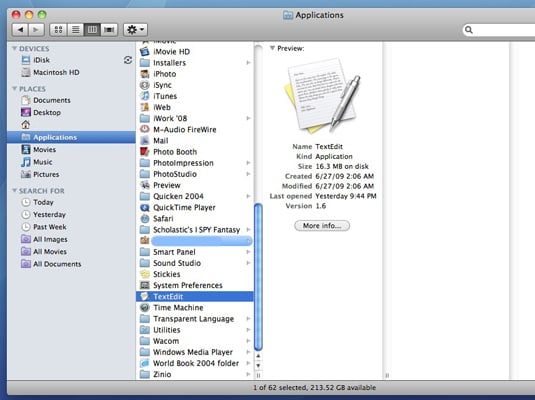

- #MAKE TXT FILE ON MAC HOW TO#
- #MAKE TXT FILE ON MAC FOR MAC#
- #MAKE TXT FILE ON MAC MAC OS#
- #MAKE TXT FILE ON MAC CODE#
If you think this was actually too simple, think at how you can make it better by combining with Automator, as an intermediary shell action between two other commands. The part between quotes will be the first line of your file, and the name of your file will be filename.txt. Of course, change “yourusername” with your real username on that Mac.Įcho “this line created with terminal” > filename.txt If you want to create the text file on your Desktop. Change your folder to the desired location for your future text file, let’s say by: For those of you who don’t know where to find it, try “Applications / Utilities”, you’ll find it there.Ģ. I have it in the dock, because I use it a lot, but this is not the default setup.
#MAKE TXT FILE ON MAC MAC OS#
But Mac OS users are not like Linux users, like I learned after one of my most commented posts on digg, so here’s the simple trick:ġ. The trick is basically a linux shell hack, which any normal linux user knows, or used in his days. For those of you who don’t kow the original post, here is a more detailed description of using Quicksilver for creating text files, prepending or appending text to them. So, knowing that this particular topic is so hot, I thought it would be interesting to show you how to create a text file on Mac OS, this time without Quicksilver. Also, for people coming from other operating systems, this is also one of the most important sources of frustration. Or echo $'First line.\nSecond line.\nThird line.' >foo.txtĪnother possibility is to group commands.Believe it or not, this is one of the most popular questions by which my blog is found by search engines. You can use a string literal containing newlines. printf '%s\n' 'First line.' 'Second line.' 'Third line.' >foo.txt
#MAKE TXT FILE ON MAC CODE#
Step 3: Next, write the start and the end time code in hours. Step 2: Next start with writing '1' as the first caption and then hit the enter button. Step 1: On your Mac system, open a new file in the TextEdit program.

If you want to write multiple lines, here are a few possibilities. If you wish to create subtitles for video on your Mac video, listed below are the steps. For example, the following command creates a file called foo.txt containing the line Hello, world. The basic way to create a file with the shell is with output redirection. In the Save As box, type a name for the file.
#MAKE TXT FILE ON MAC FOR MAC#
See What is the exact difference between a 'terminal', a 'shell', a 'tty' and a 'console'? Save a file as plain text (Word only) Save a file as JPEG (PowerPoint only) Save a file as a movie (PowerPoint only) Save a file in the Open XML Format (the default file format for Office for Mac 2011) Create a file, or open the file that you want to save.
#MAKE TXT FILE ON MAC HOW TO#
If you meant using the command line, then you are asking how to create a file using the shell. The second one on this list and answer to how to make a new text file on Mac, is EMacs. TextEdit is the first tool on this list, and it also answers your question how to create a new text. It requires us to go into TextEdit’s preferences, and tweak some settings. Part 2: How to Make a Txt File on Mac Method 1: TextEdit. Apparently, there is a kind of hidden feature in TextEdit that will allow us to save our files in the plain text format. Just invoke any non-GUI editor ( emacs -nw, joe, nano, vi, vim, …). Create Files in TXT Format on Mac: Editing the Preferences. Control-click on an existing file within that folder and select Create New File from the Services submenu. You can use an application running in a terminal. To test it, in the Finder go to the folder where you want to create a new file. You can't use a terminal to create a file.


 0 kommentar(er)
0 kommentar(er)
